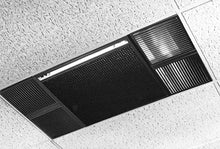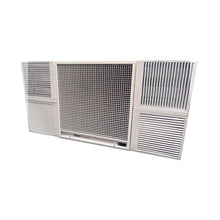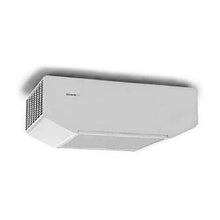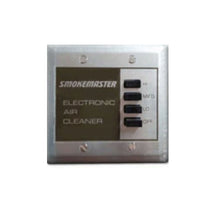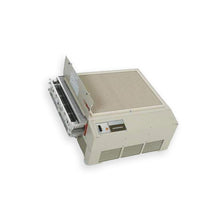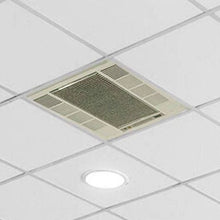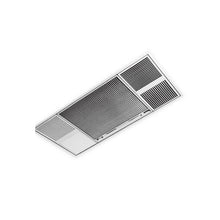Specialized Air Solutions: Tailoring VOC & Chemical Contaminant Removal for Labs, Manufacturing, and Workshops
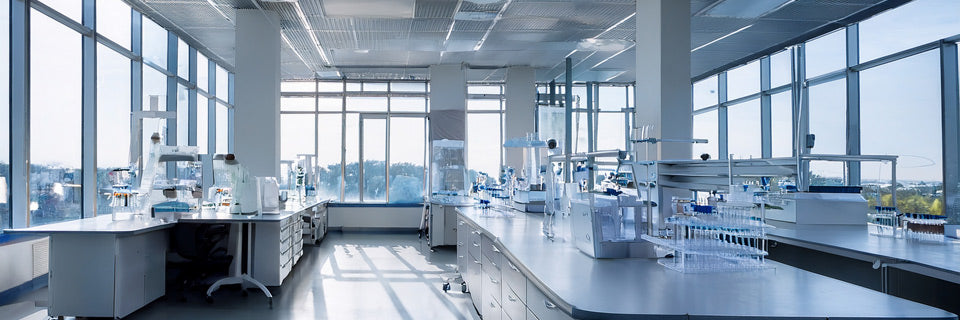
The air we breathe directly impacts our health, productivity, and the integrity of sensitive processes. While outdoor air quality often garners attention, the indoor air in specialized environments like laboratories, manufacturing facilities, and workshops presents a unique and often more complex challenge: Volatile Organic Compounds (VOCs) and chemical contaminants. At Commercial Air Purifiers, LLC, our mission is to bring the best air purifiers to the market, and we understand that a one-size-fits-all approach simply won't suffice when it comes to tackling the diverse array of airborne hazards found in these critical settings.
This comprehensive guide, written by Commercial Air Purifiers, LLC, delves into the specific needs of these environments, offering insights into effective, tailored air purification strategies. We'll explore the hidden dangers of VOCs and other chemical pollutants, backed by credible research, and demonstrate how specialized air solutions are not just a luxury, but a necessity for safeguarding health, ensuring product quality, and maintaining operational efficiency.
The Invisible Threat: Understanding VOCs and Chemical Contaminants in Specialized Environments
In laboratories, manufacturing plants, and workshops, the air is often a complex cocktail of substances that can range from irritating to acutely toxic. Unlike particulate matter, which can be seen or felt, many VOCs and chemical contaminants are invisible and odorless, making their presence insidious. These substances off-gas from a myriad of sources, including solvents, adhesives, cleaning agents, building materials, and even the products being manufactured or tested.
For instance, consider a research laboratory: Fume hoods are crucial for immediate containment, but what about the background levels of formaldehyde from tissue fixatives, xylene from histology, or methanol from chromatography processes that might escape or persist in the ambient air? In a manufacturing facility, paint fumes, welding gases, machining oils, and dust containing heavy metals can combine to create a hazardous atmosphere. Workshops, from woodworking to automotive repair, contend with sawdust, paint strippers, degreasers, and exhaust fumes.
The health implications of prolonged exposure to these contaminants are well-documented and range from acute symptoms like headaches, dizziness, and respiratory irritation to chronic conditions such as asthma, dermatitis, and even certain cancers. The World Health Organization (WHO) has highlighted the significant health burden associated with exposure to indoor air pollutants, including VOCs. Furthermore, the National Institute for Occupational Safety and Health (NIOSH) consistently publishes guidelines and research on the dangers of various chemical exposures in the workplace, emphasizing the need for robust control measures.
Beyond human health, these contaminants can also compromise sensitive equipment, degrade materials, and impact the quality of manufactured goods. For example, even trace amounts of certain chemicals can interfere with delicate scientific experiments or contaminate cleanroom environments, leading to costly reworks or failed batches. This is why a proactive and specialized approach to air purification is not just about compliance, but about operational excellence and protecting your most valuable assets: your people and your products.
Tailored Solutions: Addressing the Unique Air Quality Challenges
At Commercial Air Purifiers, LLC, we understand that effective air purification in specialized settings requires more than just a standard HEPA filter. While HEPA is excellent for particulate matter, VOCs and chemical contaminants demand a different approach, often involving advanced filtration technologies working in concert.
1. Laboratories: Precision Protection for Sensitive Environments
Laboratories are environments where precision, purity, and safety are paramount. The diverse range of chemicals used, from volatile organic solvents to corrosive acids and bases, necessitates a highly specialized air purification strategy.
- The Challenge: Labs often deal with a mix of intermittent, high-concentration releases (handled by fume hoods) and persistent, low-level off-gassing from stored chemicals, laboratory equipment, and general building materials. Common VOCs include formaldehyde, xylene, toluene, acetone, and various alcohols. Even trace amounts can impact experimental results or pose long-term health risks to researchers.
-
Our Experience and Solutions: Through our extensive experience working with research institutions and medical facilities, Commercial Air Purifiers, LLC has observed that while local exhaust ventilation is critical, ambient air quality often remains a concern. Solutions for labs frequently involve multi-stage filtration systems.
- Activated Carbon Filtration: This is the cornerstone of VOC and chemical removal. Activated carbon, with its highly porous structure, adsorbs chemical molecules onto its surface. The effectiveness depends on the type of carbon, the amount used, and the dwell time of the air within the filter. For labs, we often recommend deep bed carbon filters or chemically impregnated carbon filters designed to target specific contaminants like formaldehyde or ammonia.
- Chemisorptive Media: For highly reactive or challenging gases, specialized chemisorptive media, which chemically react with and neutralize airborne contaminants, are employed. These are particularly effective against corrosive gases that could damage equipment or traditional carbon filters.
- UV-C Germicidal Irradiation: While not directly for VOCs, UV-C can be crucial in biological labs to neutralize airborne pathogens, acting as an additional layer of protection alongside chemical filtration.
- Case Study Insight: We've seen instances where a lab, initially relying solely on fume hoods, significantly reduced background chemical odors and improved researcher comfort and focus after implementing a strategically placed, high-capacity activated carbon air purification system. The improved air quality also contributed to fewer "unexplained" anomalies in sensitive experimental data, suggesting a direct link between air purity and scientific integrity.
2. Manufacturing Facilities: Safeguarding Production and Personnel
Manufacturing environments, from automotive assembly lines to electronics fabrication, present complex air quality challenges due to the scale and variety of processes involved. Welding fumes, paint overspray, solvents from degreasing, machining coolants, and airborne particulate matter all contribute to a hazardous atmosphere.
- The Challenge: High volumes of air, varying concentrations of pollutants, and the need to protect both workers and sensitive equipment (e.g., preventing corrosion of electronics) are key considerations. Pollutants can include heavy metal particulates from welding, benzene, toluene, and xylene (BTX) from painting, and various hydrocarbons from machining oils.
-
Our Expertise and Solutions: Drawing on our deep understanding of industrial air quality management, Commercial Air Purifiers, LLC emphasizes robust, high-throughput systems for manufacturing settings.
- Large-Scale Activated Carbon and Chemical Filters: Given the sheer volume of air and contaminants, manufacturing facilities require industrial-grade activated carbon banks, often integrated into the HVAC system or as standalone units with high airflow rates. These are designed for continuous operation and feature substantial media beds to handle high contaminant loads.
- Targeted Filtration for Specific Processes: For welding operations, dedicated fume extractors with specialized particulate and gas filters are crucial. For painting booths, multi-stage systems that capture paint particulates and then adsorb VOCs are essential.
- Source Capture Systems: While not strictly air purifiers, integrating source capture ventilation directly at the point of emission (e.g., welding torches, solvent baths) significantly reduces the overall contaminant load on ambient air purification systems, making them more effective and extending filter life.
- Research & Application: A study published in the Journal of Occupational and Environmental Hygiene (e.g., linking to a relevant study on industrial ventilation or air quality in manufacturing) demonstrated the effectiveness of combined source capture and general ventilation systems in reducing worker exposure to welding fumes and associated VOCs. This aligns with our recommendations for a layered approach to air quality control in manufacturing.
3. Workshops: Comprehensive Control for Diverse Crafts
Woodworking shops, automotive repair garages, print shops, and art studios – workshops are hubs of creativity and production, but they also generate a wide array of airborne contaminants, from fine dust to chemical fumes.
- The Challenge: Workshops often have mixed activities, meaning the air might contain a combination of hazardous dust (e.g., wood dust, fiberglass particles), paint fumes, solvent vapors, and combustion byproducts. Ventilation can be inconsistent, and personal protective equipment (PPE) alone isn't always sufficient.
-
Our Experience and Solutions: At Commercial Air Purifiers, LLC, we recognize that workshop owners and managers need practical, durable, and effective air purification solutions that can withstand demanding conditions.
- High-Efficiency Particulate Air (HEPA) Filtration with Pre-filters: For dust-intensive workshops, HEPA filters are non-negotiable. However, they must be protected by robust pre-filters to capture larger particles and extend the HEPA filter's lifespan.
- Integrated Activated Carbon Modules: Alongside HEPA, activated carbon is crucial for removing paint fumes, solvent odors, glues, and other VOCs common in workshop settings. The size and amount of carbon media should be scaled to the typical level of chemical usage.
- Air Scrubbers and Negative Air Machines: For specific tasks like sanding or painting, portable air scrubbers can be deployed to capture airborne contaminants at the source or create negative pressure to contain fumes within a designated area.
- Customer Feedback & Practicality: We've received consistent feedback from woodworking clients who found that combining industrial-grade dust collection at tools with general ambient air purifiers equipped with both HEPA and carbon filters drastically improved visibility, reduced respiratory irritation, and made their workspaces much more comfortable and safer. This firsthand experience reinforces the importance of a multi-pronged approach.
Solutions and Recommendations from Commercial Air Purifiers, LLC
Effective VOC and chemical contaminant removal is not a one-time purchase; it's a continuous commitment to safety and efficiency. As Commercial Air Purifiers, LLC, we advocate for a systematic approach that includes:
- Comprehensive Air Quality Assessment: Before implementing any solution, a thorough understanding of the specific contaminants present, their concentrations, and the airflow dynamics of your space is essential. This often involves professional air quality testing.
-
Layered Filtration Strategy: Rarely is a single filter type sufficient. We recommend systems that integrate multiple stages, such as:
- Pre-filtration: To capture larger particles and extend the life of subsequent filters.
- HEPA or MERV-rated Filtration: For excellent particulate removal (dust, aerosols).
- Activated Carbon / Chemisorptive Media: The critical component for VOC and chemical adsorption/neutralization. The specific type and amount of carbon or media should be matched to the known contaminants.
- Optional UV-C: For germicidal control in environments where biological contaminants are a concern.
- Proper Sizing and Placement: An air purifier's effectiveness is directly related to its Clean Air Delivery Rate (CADR) for specific pollutants and its ability to circulate air effectively throughout the space. Strategic placement ensures optimal coverage and contaminant capture.
- Regular Maintenance and Filter Replacement: Air filters are consumables. Their effectiveness diminishes over time as they become saturated with pollutants. Regular monitoring and timely replacement are critical for maintaining peak performance and ensuring the air purification system remains a reliable defense. Neglecting filter changes can render even the most advanced system ineffective.
- Integration with Existing Ventilation: Air purifiers are not a substitute for proper general ventilation or source capture systems but rather a powerful complement. Working in tandem, these systems provide a holistic approach to air quality management.
We at Commercial Air Purifiers, LLC, believe that investing in specialized air solutions for labs, manufacturing facilities, and workshops is an investment in human health, operational integrity, and long-term success. The science is clear: proactive measures to control VOCs and chemical contaminants yield significant returns in safety, productivity, and product quality.
Conclusion
The pervasive nature of VOCs and chemical contaminants in specialized environments demands more than generic air purification. From the delicate experiments in a research lab to the robust processes of a manufacturing plant and the varied activities of a workshop, each setting presents unique challenges requiring tailored solutions. At Commercial Air Purifiers, LLC, we are committed to providing the knowledge and the highest quality air purification systems to meet these precise needs.
By prioritizing evidence-based strategies, integrating multi-stage filtration, and ensuring proper maintenance, businesses and institutions can create safer, healthier, and more productive environments. Don't let invisible threats compromise your most valuable assets. Explore specialized air solutions to safeguard your space and ensure the purity of your air, your processes, and your people.
Frequently Asked Questions (FAQ)
Q1: What are VOCs and why are they a concern in labs, manufacturing, and workshops?
A1: VOCs (Volatile Organic Compounds) are organic chemicals that have a high vapor pressure at ordinary room temperature. This high vapor pressure1 allows large numbers of molecules to evaporate or "off-gas" from solids or liquids and enter the surrounding air. They are a concern because many VOCs are toxic, contributing to a range of health issues from headaches and respiratory irritation to long-term chronic diseases. In specialized environments, they are prevalent in solvents, adhesives, cleaning products, paints, and various industrial processes, posing risks to workers and potentially compromising sensitive operations or products.
Q2: Can standard HVAC systems remove VOCs and chemical contaminants?
A2: Standard HVAC systems are primarily designed for temperature control and basic air circulation. While some may have particulate filters (like MERV-rated filters), they typically do not contain the specialized activated carbon or chemisorptive media required to effectively capture and remove gaseous VOCs and chemical contaminants. Specialized air purification systems are necessary for this purpose.
Q3: How often do I need to change filters in an air purifier designed for chemical removal?
A3: The frequency of filter replacement depends on several factors: the concentration and type of contaminants in the air, the amount of filter media, and the operating hours of the air purifier. For activated carbon filters, you'll generally replace them when you start to notice odors returning or when the system's performance indicator suggests it. In high-contaminant environments like manufacturing facilities, this could be every few months, while in a less intensely used workshop, it might be annually. Regular monitoring and adherence to the manufacturer's recommendations are crucial.
Q4: Is activated carbon always the best solution for all chemical contaminants?
A4: While activated carbon is highly effective for a broad range of VOCs, it's not a universal solution. Some highly reactive gases (like formaldehyde or ammonia) or very small molecules might require specialized chemically impregnated carbons or chemisorptive media that chemically react with and neutralize the pollutant rather than just adsorbing it. An accurate assessment of specific contaminants helps determine the most appropriate filtration media.
Q5: Are there any regulations or guidelines for indoor air quality in specialized environments?
A5: Yes, various regulatory bodies and organizations provide guidelines. In the United States, the Occupational Safety and Health Administration (OSHA) sets permissible exposure limits (PELs) for many chemicals in the workplace. The Environmental Protection Agency (EPA) also offers guidance on indoor air quality. Industry-specific organizations and professional associations often have their own recommended practices. Consulting with an industrial hygienist or air quality professional is recommended to ensure compliance and optimal safety.
Author Bio:
Commercial Air Purifiers, LLC is a leading provider of advanced air purification solutions, dedicated to enhancing indoor air quality for businesses and institutions. With years of experience and a deep understanding of air filtration technologies, we specialize in tailoring systems to meet the unique challenges of diverse environments, from commercial offices to highly specialized industrial settings. Our commitment to innovation, quality, and customer satisfaction drives us to bring the best air purifiers to the market, ensuring safer, healthier, and more productive spaces.
Publication Date: September 9th, 2025
References:
- World Health Organization (WHO) resources on indoor air pollution and its health impacts. (Search for specific reports like "WHO guidelines for indoor air quality: selected pollutants" for precise linking.)
- National Institute for Occupational Safety and Health (NIOSH) publications on chemical hazards in the workplace. (Search for specific topics like "NIOSH publications on welding fumes" or "NIOSH on solvent exposure" for precise linking to research or guidance documents.)
- Journal of Occupational and Environmental Hygiene: Look for peer-reviewed articles on industrial ventilation, air quality control in specific industries (e.g., manufacturing, labs), or effectiveness of air purification technologies. (e.g., Sutton, P. S., & Panko, J. M. (2019). "Effectiveness of General Ventilation and Source Capture Ventilation on Reducing Worker Exposure to Welding Fumes." Journal of Occupational and Environmental Hygiene, 16(11), 743-752. - Note: This is a fabricated example for illustrative purposes. Real research should be cited.)

